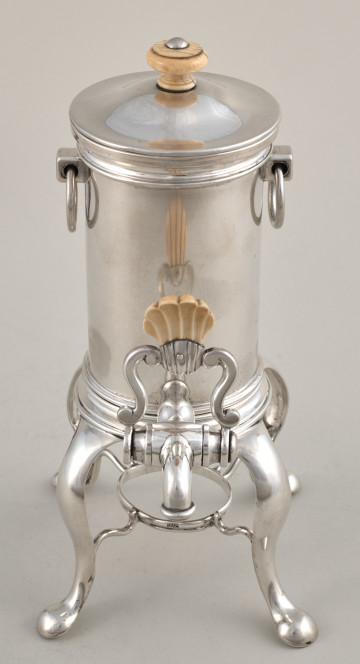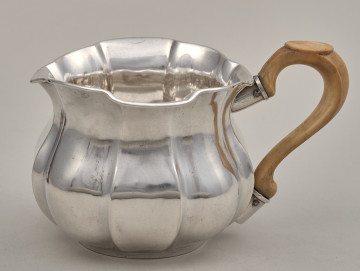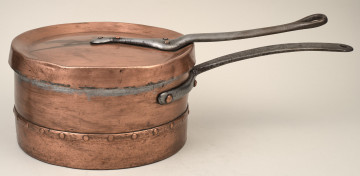
Teapot
19th (?) century
Castle Museum in Łańcut
Part of the collection: Metale
Fork A fruit fork from the collection of the Potoccy family, from the beginning of the 20th century, made of wood and metal. This tri-tine fruit fork has tines extending at their bases with pointy tips. The grip is veneered using nut wood (fixed by two rivets), straight and flat, with a trapezoidal metal end. The body is thicker, shaped like a trapeze. The Polish word ‘sztućce’ [cutlery] originates from the German term Stütze meaning „support”. Cutlery, meaning, all the various kinds of spoons, forks, belong to table dressing. They are used for the consumption of food and their manual preparation. Depending on their sizes and shapes, they are assigned to various meals served at the table. Forks were known already to ancient Greeks, the First Book of Samuel also describes them. Forks were also known in the Roman Empire (archeological findings revealed items from the 2nd century AD). In Europe forks were already used in the 10th century in Italy for eating spaghetti. They made their way to Poland in the 17th century (the 18th century saw the introduction of the two-tined fork). According to legend, when king Henry de Valois fled Poland, he took with himself a fork set, legend has it, seen for the first time, and brought them to France.
Object type
Metals
Material
wood, metal
Creation time / dating
Owner
Castle Museum in Łańcut
Identification number
Location / status

19th (?) century
Castle Museum in Łańcut

19th (?) century
Castle Museum in Łańcut

19th / 20th century
Castle Museum in Łańcut
DISCOVER this TOPIC
National Museum in Szczecin
DISCOVER this PATH
Educational path